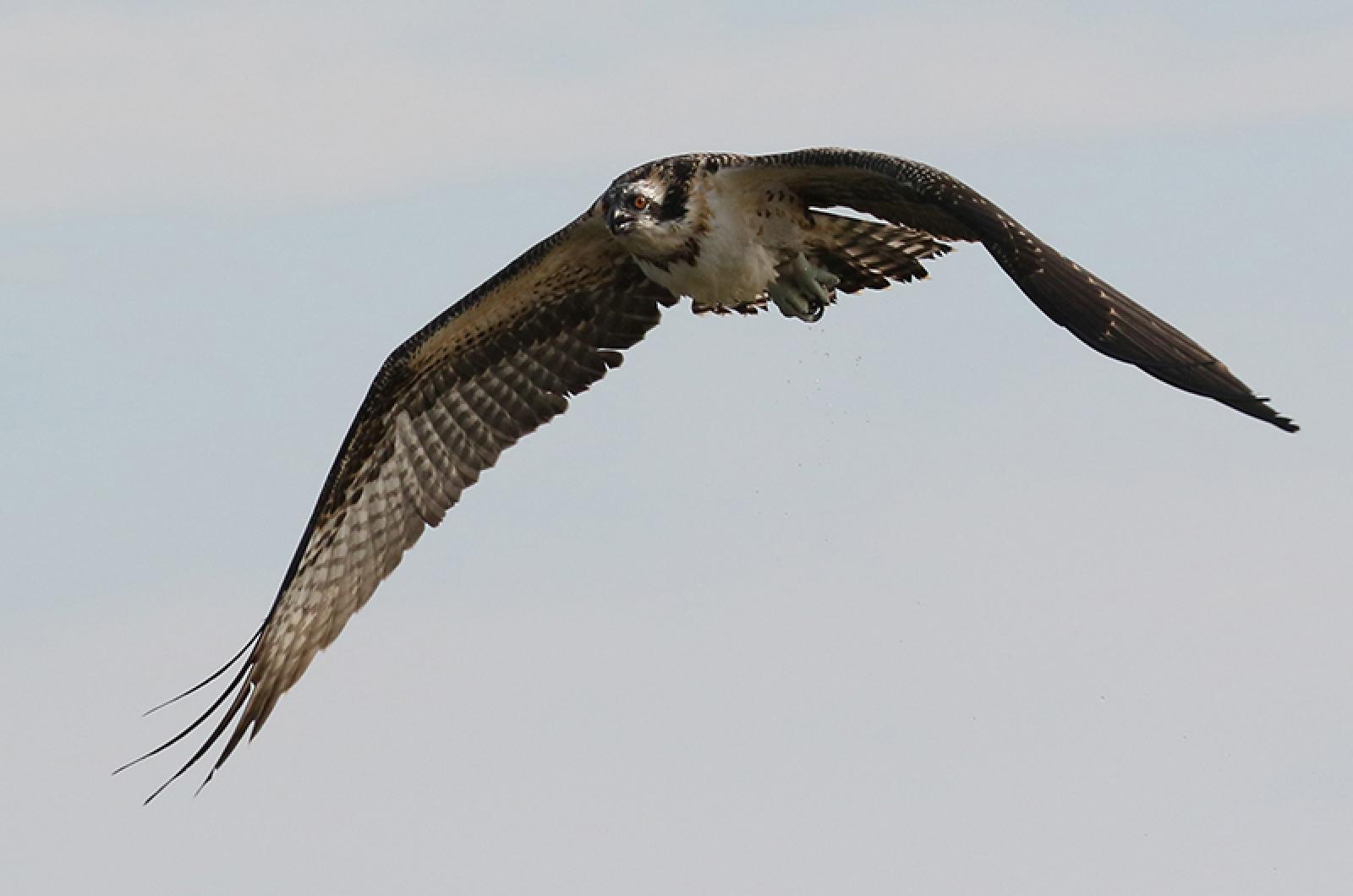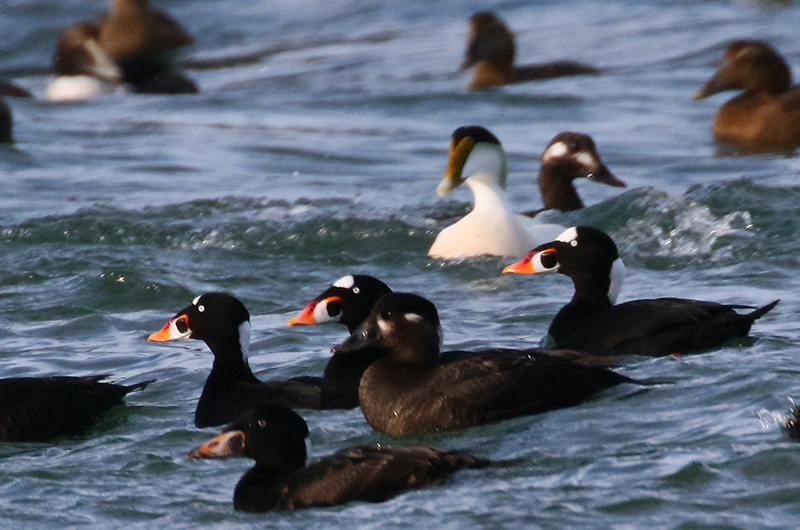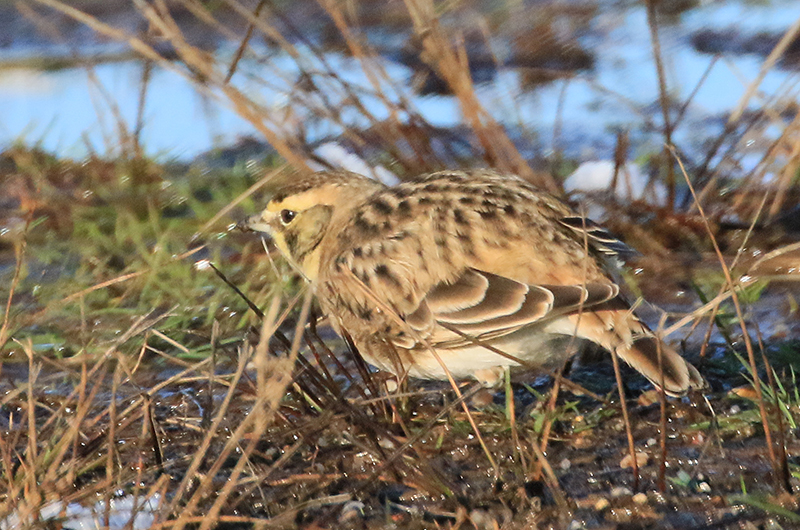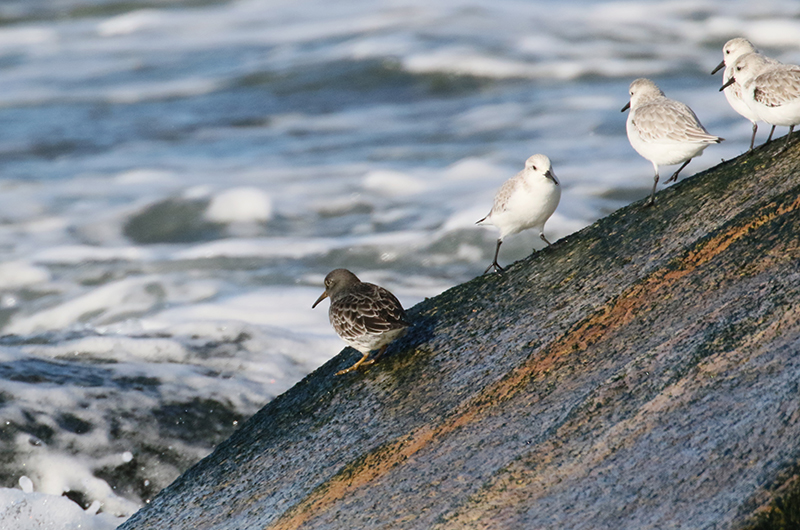The northward migration now well underway is more than species arriving from the south. Many of our winter residents (robins, juncos, diving ducks, loons, etc.) breed far to the north and west, and they are now starting to depart for their breeding grounds. Recent sightings confirm these departures for ducks, especially the ocean-loving eiders and scoters that have been so prevalent this winter. Bob Shriber visited Black Point Pond on March 21 and noted that American wigeon, green-winged teal, greater scaup, bufflehead, and red-breasted mergansers were not as abundant as they have been. The decrease was especially notable when he went to the Gay Head Cliffs and found fewer than 10 individuals of each species: common eiders and the three scoter species — white-winged, black, and surf. Allan Keith has also noted this decrease. The waterfowl are leaving, as they do at this time of the year.
Bird Sightings
New arrivals continue to show up. Osprey are one of the most eagerly anticipated arrivals. On March 15, Steve Donovan observed an osprey carrying a fish in its talons as it flew overhead about 20 feet away. Buddy and Chip Vanderhoop saw one eating a herring in Menemsha Pond on March 19. Allen Slater observed one rebuilding a nest on a pole near his house on March 20. Greg Pattison and Judy Klumick also spotted one recently.
Another eagerly anticipated arrival is the eastern phoebe. Two different birds were observed on March 21. Luanne Johnson, Margaret Curtin and Nancy Weaver report one calling at the Oak Bluffs pumping station, and Matt Pelikan saw one in West Tisbury near the intersection of Old County Road and State Road.
These last two springs have produced a tremendous show of northern gannets around the Vineyard, mostly off the South Shore. This year’s show has started as Bob Shriber reports 25 gannets off Philbin Beach on the morning of March 22. He also reports finding five purple sandpipers up there on March 16, and he is regularly seeing a raven, most recently on March 20.
Killdeer continue to show up. Martha Moore found two of them along the shores of Middlepoint Cove on March 17, both Luanne Johnson and I found three killdeer at Katama Farm on March 21, and Allan Keith had one show up in his farm fields on March 22.
The first double-crested cormorants arrived on Sarson’s Island — their breeding colony — on March 22. And multiple observers report seeing up to six adult cormorants diving and fishing at the Oak Bluffs pumping station this past week.
Also passing through are red-winged blackbirds, grackles and brown-headed cowbirds. Albert Fischer had a flock of 200 red-wings, a dozen grackles and dozen brown-headed cowbirds in his yard on March 15. Melissa Gold, Jessica Oliver, Peggy Schwier and I have also witnessed such flocks.
Winter finches are now passing through on their way north after a winter of multiple sightings and unusual abundance. They erupted southward to avoid food shortages in their usual northern haunts. Twelve red crossbills made a brief stop in some birch trees above Cynthia Bloomquist’s stream and pond on March 20.
Speaking of invaders from the north, Tracy Winn saw a snowy owl in Aquinnah on March 17. And on March 18 she found 10 wood ducks and two ruddy tucks at Blackwater Pond.
A seldom reported species this winter has been the cedar waxwing. Lucy Sheldon observed them in her yard on March 20. Only 20 waxwings were found on this year’s Christmas Bird Count, and CBC data suggests that their population has declined greatly from its peak from 1990 to 2010. We do not know why.
Bald eagles predominate on the predator front. Jeff Bernier spotted two immature bald eagles over Lagoon Pond on March 16, birds that were also observed by Donna Grant. Martha Moore observed an adult eagle perched on the Long Point osprey pole on March 17, and Rosalie Hornblower saw two adults perched on an osprey nest at Squibnocket on March 20.
Also of note is that Lisa Maxfield heard a barred owl oddly calling in the daytime at Brush Pond on March 21 — a new location for this species. And Sandra Talanian points out that our red-tailed hawks are paired up and so they perch and soar together. She observed this at Katama on March 21.
Finally, here are two unexpected observations I made during my visit to the right fork area of Katama on March 20. I spotted a flock of six yellow-rumped warblers — an unusually high number for this winter but nowhere near the size we observed prior to 2000. Even more surprising was to hear a crow singing, sounding like a mourning dove cooing but shorter and softer, a sound that was only audible within 50 feet of the bird.
Please email your sightings to birds@mvgazette.com.
Robert Culbert is an ecological consultant with Nature Watch LLC living in Vineyard Haven.











Comments
Comment policy »